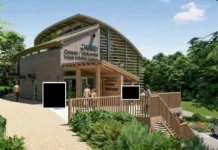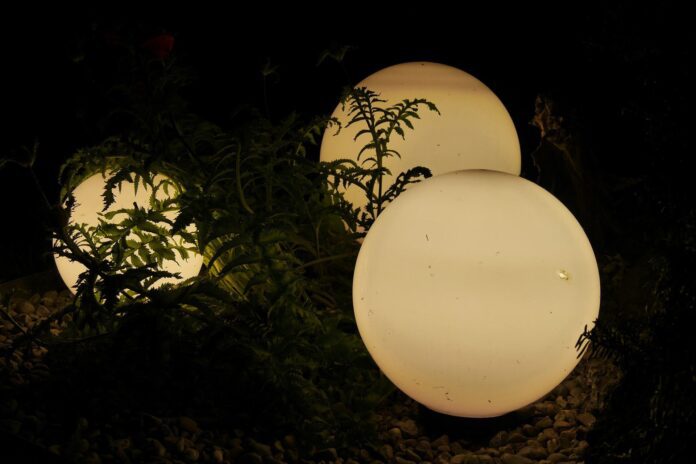- Nine in ten (91%) Brits with a south-facing garden are happy with the amount of light their garden receives.
- In comparison, just 47% of north-facing garden owners are happy with lighting levels.
- Brits place a lot of value on a well-lit, usable garden, with 16.6% of UK residents willing to pay £7000 or more for a property that has a south-facing garden.
- YESSS Electrical investigates demand for light filled gardens and how homeowners can add light to their existing garden.
A new survey has revealed how much value a well-lit garden adds to your property, and the top five mistakes that Brits make when lighting their gardens.
The lighting team at YESSS Electrical surveyed 2000 people to determine the percentage of Britons that are happy with the light levels in their gardens. The team of lighting experts also revealed how homeowners can illuminate gardens, and the mistakes to avoid.
UK residents are strongly in favour of homes with a south-facing garden. 91% of homeowners with a south-facing garden are happy with the amount of light that their garden receives.
In comparison, 71% of homeowners with an east/west-facing garden are happy with the lighting of their outdoor space, while just 47% of north-facing garden owners are happy with light levels in their gardens.
The usability of lighting with each garden orientation also results in higher prices for south-facing gardens.
Overall, 41.5% of British homeowners would pay between £500 – £1000 more for a property with a sunny south-facing garden. However, 16.6% of potential homeowners would pay £7000 or more for a property with this feature. A further 14% of UK residents would pay £1000 – £2000 for a south-facing garden.
The Top Five Common Garden Lighting Mistakes to Avoid
Avoid lighting every garden orientation the same
Depending on the position of your home, you need to ensure it is correctly lit. North-facing homes will benefit from having more frequently placed, brighter outdoor lighting to ensure that the garden can be lit-up and used throughout the day.
On the other hand, south-facing gardens benefit from paired-back lighting as the garden is naturally lighter, especially during the height of summer.
East-facing gardens receive lots of lighting in the morning, while the area furthest from the house will likely only receive light during the evening. You could incorporate dimmable lighting into a seated area further from your home, so the area can be lit up during the morning, and lowered when light reaches this part of the garden in the evening.
West-facing gardens benefit from a similar setup. The end of your garden will receive light in the morning, while your home will shade the nearest part of your garden. Opt for dimmable lighting near the home, so that the zone can be brightened in the morning, and lowered when the sun lights up this area during the evening.
Not zoning your garden when planning the installation
Planning the use of the garden space is very important to the placement of lights.
Use a stronger, more direct lighting, for areas such as an outdoor cooking area, as these will ensure that you can see what you’re doing at all times. Wall lighting and brick lighting is effective for adding a gentler ambience to a relaxing outdoor space. And bollard lighting can provide both ambiance, and light up a path through the garden.
Purchasing lights without looking at brightness levels or dimmable options
In the evening, too much or not enough light can affect the ambience of a garden. Too little light prevents your garden’s best features from being displayed. Too much light can create a football field effect, great for large venues; however, it doesn’t allow for a relaxing atmosphere.
The size of the garden does affect the amount of lighting you should place at various points. Solar lights could be used if you have a small garden as they emit enough soft light to gently illuminate a smaller garden.
If you have a large garden, consider installing brighter lighting towards the end of the garden and softer lighting closer to the house/outdoor dining areas. This balance will produce a design and function-led garden that is practical and ambient.
When selecting garden lighting, 30.7% of UK residents said they favour solar lighting. The most popular response (31.2%) is to ensure that the lighting has a low running cost.
Leaving the lighting of your garden until last during a remodelling
When designing a garden, lighting may not be the first thing on your mind. However, it is one of the most critical decisions in the early stages of remodelling as laying wiring beneath patios and lawns, and hiding it in fences, walls, and structures, produces a finished and tidy appearance.
Not getting technical with IP ratings
Although only 3.2% of people prioritise IP rating when choosing outdoor lighting, it is one of the most important things to consider when buying lights that need to withstand the elements. IP stands for Ingress Protection, and is the rating of protection given to the light fitting against water and dirt.
The IP rating is the best way to ensure the lighting is fit for purpose.
We recommend:
- Standard Garden Lights – should be IP44+
- Deck Lights & Patio Lights – IP65
- Water Lights – IP68
Dave Simpson, Product Manager – Lighting and Lamps at YESSS Electrical says, “The amount of light that your garden receives completely changes how usable your home’s outdoor space is. But don’t discount gardens with a north and east orientation that are more shaded than south-facing alternatives.
“Well placed lights add an ambience to the garden that replicates the sun hitting the garden early and late in the day. These create a much warmer and more welcoming area for hosting friends and enjoying time outdoors.
“You can also add task lighting near to BBQs and outdoor cooking spaces – something that can benefit any garden to ensure you aren’t left grilling in the dark!
“When designing a garden and picking out the lighting, checking IP ratings is crucial. Ensuring you opt for the right level of protection on each light ensures the fitting won’t be affected by dirt or water.
“Homeowners looking to scale back on utility bills can make use of solar powered garden lights, one of the most cost-effective ways to illuminate your garden. Opt for a larger lumen rating if you’re lighting a larger garden.”
About YESSS Electrical
YESSS Electrical are the fastest growing electrical wholesaler in the UK, with over 95 branches nationwide. Locations include London, Sheffield, Leeds, Nottingham and even the Channel Islands.
The YESSS Lighting team supplies efficient indoor and outdoor lighting solutions for home and work to both the trade and B2C customers. They offer a wide range of light types, including LED downlights, decorative spotlights, and LED light bulbs.
Help keep news FREE for our readers
Supporting your local community newspaper/online news outlet is crucial now more than ever. If you believe in independent journalism, then consider making a valuable contribution by making a one-time or monthly donation. We operate in rural areas where providing unbiased news can be challenging. Read More About Supporting The West Wales Chronicle


























